1920: The Year the Marathon County Fair was Canceled
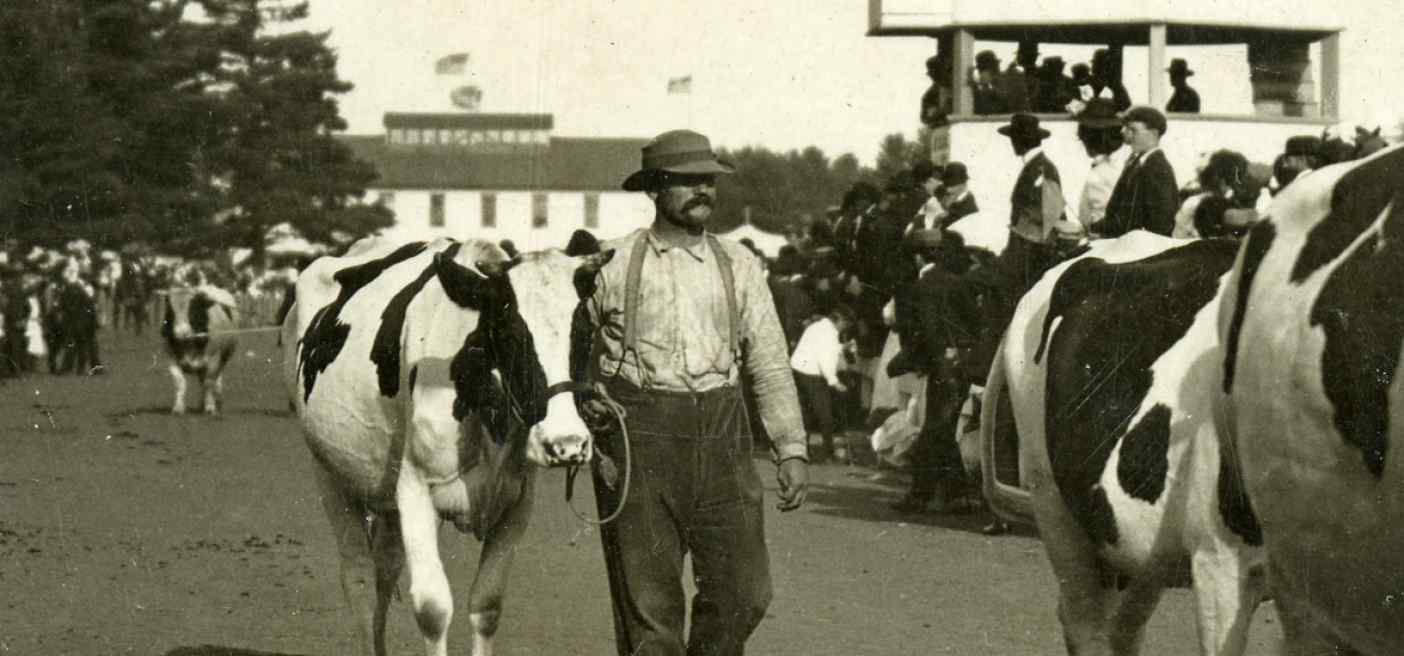
In April 1920, the Marathon County Agricultural Society (who have sponsored and organized the county fair since 1868) made a surprising announcement, the Marathon County Fair was to be canceled.
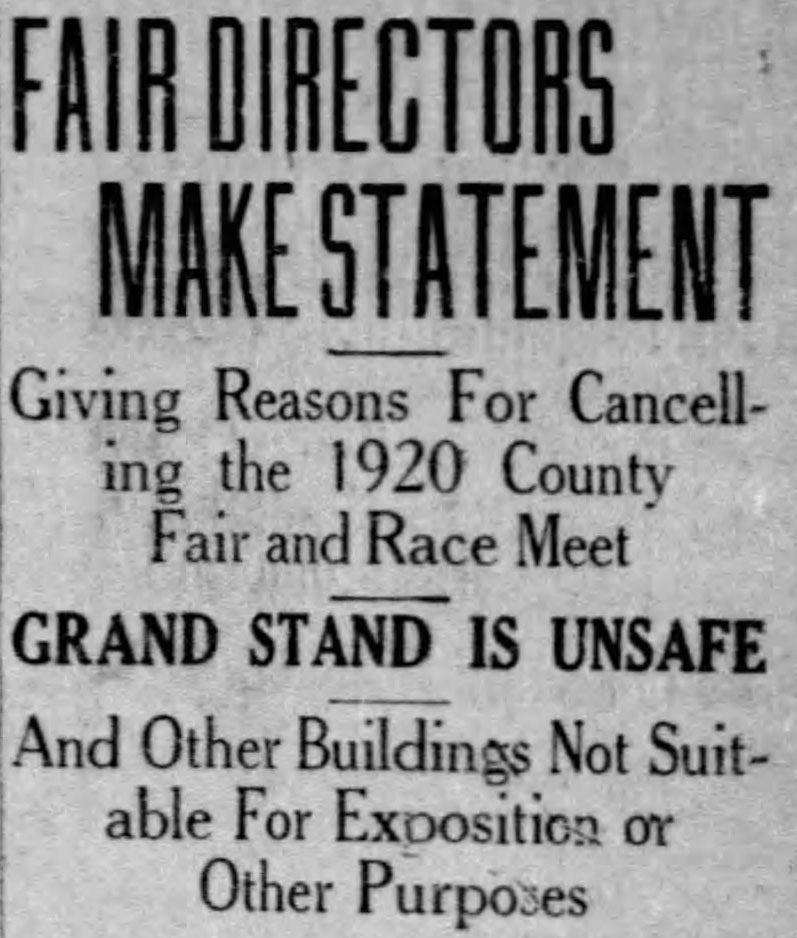
^ Headline from the Wausau Daily Herald, April 23rd, 1920.
The Marathon County Fair, 1919
The 1919 Fair had been largely successful. Although the final day had been subdued by slight rain, “Wausau Day” (when the businesses of Wausau closed to allow their employees to attend the fair) had “shattered attendance records” with approximately 23,000 fairgoers. It had featured exciting races (including the from behind upset by the horse “Bankert” over its rival “Six Cylinder Penn") and exhibition races (featuring automobiles and aeroplanes). The best of agricultural production on display at the County Fair was taken to Milwaukee for Marathon County’s blue ribbon-winning booth at the State Fair.
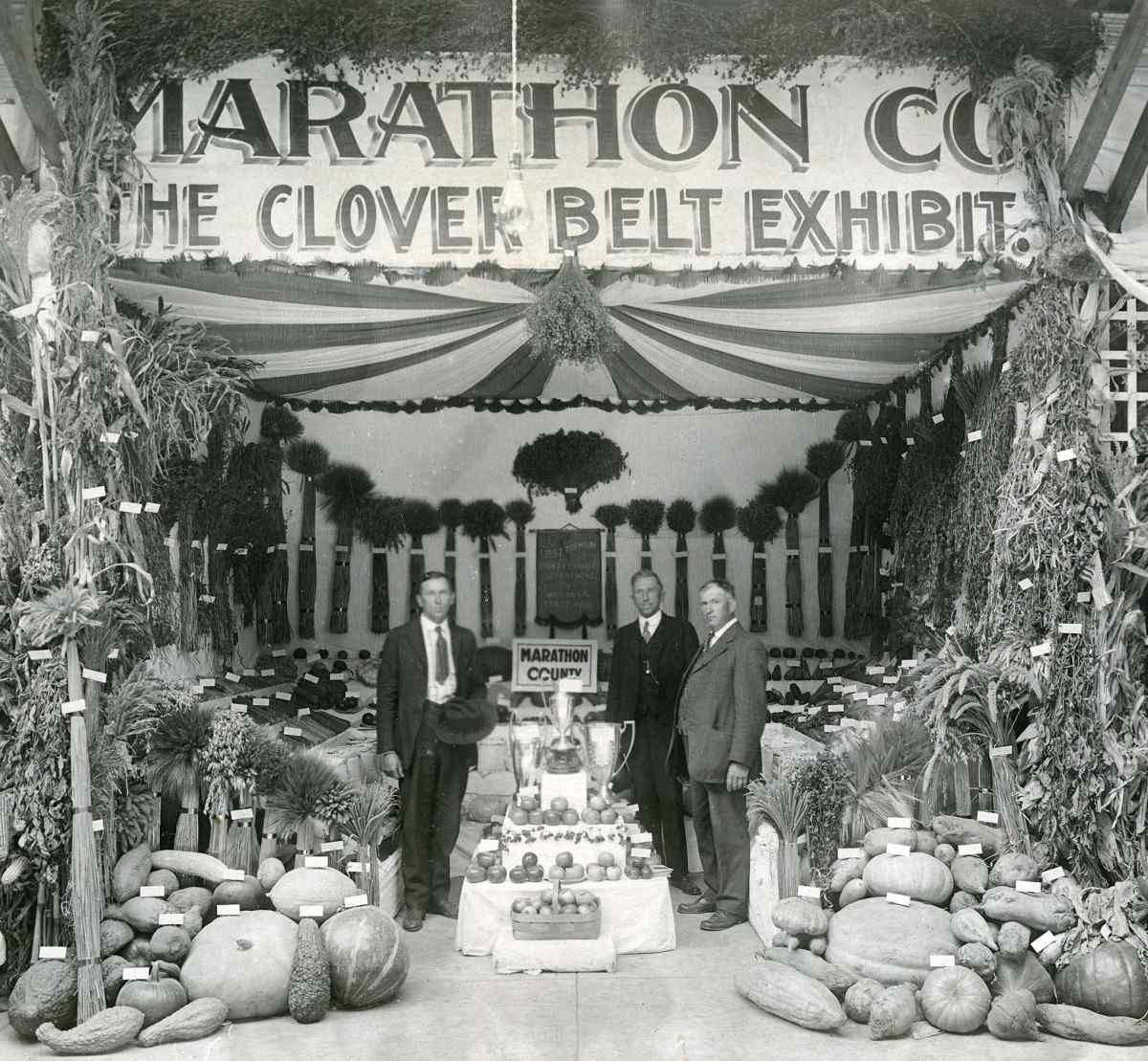
^ The Marathon County delegates to the 1919 Wisconsin State Fair posing with their award-winning display.
There were some complaints about the cleanliness of the judging barns and overcrowding at the Grandstands, but overall the fair hardly seemed in a state to give cause to cancel the 1920 proceedings.
The Decision to Postpone
A new batch of officers were elected late in 1919, notably president A.J. Peterson and secretary Arthur Prehn. Upon reviewing the state of the Agricultural Society, they realized they could not continue sponsoring the fair in their current situation. The Agricultural Society was $6,800 in debt, and even though the 1919 Fair had been a success, it would take several years of excellent attendance to crawl back out of debt. But at the same time, the buildings at the fairgrounds were in dire need of replacement. From the announcement published in the Wausau Daily Herald on April 23rd:
There are several elements which enter into the reason for this decision, chief among which is the fact that the grand stand is in such condition that it is unsafe for use, and also because of the dilapidated and unsanitary condition of the cattle barns.
For the past several years the directors have used every possible means to remedy these conditions and keep the fair going, but now they have reached such a deplorable state that the only relief is a new grand stand and stock pavilion. These are absolutely necessary and must be supplied if the Marathon county fair is to be continued.
Some farmers refused to bring their prize cows to the fair because the barns were so unsanitary. And in early 1920 the grandstands were condemned as unsafe and were demolished later that year. The Agricultural Society could no longer continue putting off the needed improvements to the fairgrounds, but without a large infusion of capital, they simply would not be able to afford the projects thanks to their debt.
The Agricultural Society therefore decided to offer the fairgrounds to Marathon County, so that it could be made into a park. In exchange for the land, they asked the County to replace the barns and grandstands and give the Agriculture Society several thousand dollars. And so in late April, 1920, the Agriculture Society presented a proposal to the County Board of Supervisors… and the Supervisors voted not to accept (by the wide margin of 14 votes).
The only other alternative the Agricultural Society could see would be to mortgage the fairgrounds to get the money for improving the infrastructure there. But any default on the loan (a real possibility for an event so tied to good weather) would mean the 80 acres of natural beauty at the edge of Wausau would end up in private hands—and the land would certainly be developed for private ownership.
And so the Fair was to be postponed for 1920, while the Agriculture Society considered how to proceed.
The Response
The public was not happy that the fair was canceled. The public outcry caused the Agricultural Society to reconsider, and several weeks later, they announced the fair would be held after all, but only with the agricultural portion of the fair (no races or carnival).
After another few weeks, the Fair board had concluded “that it will be necessary to have some races to make the fair a success,” and so a limited race program was announced. And eventually they also agreed to book a carnival.
The public was appeased by these steps, but they did not forget how close the county had come to having no fair that year. And they directed their comments at the County Board of Supervisors who had declined to support the Agricultural Society and the Fair.
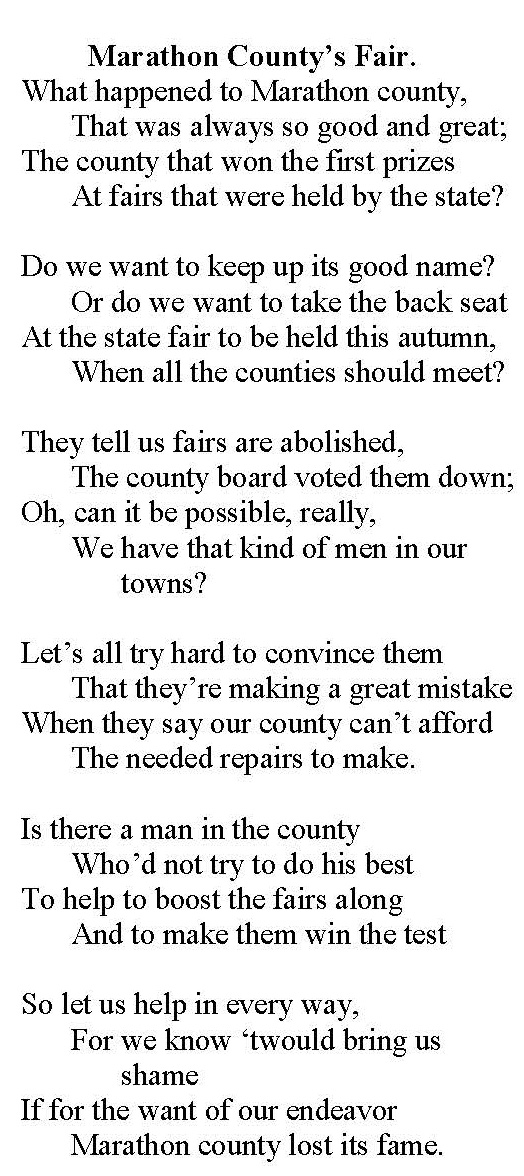
^ Letter to the editor by Clara Kennedy of Knowlton published in the Wausau Daily Herald, April 28, 1920 (reproduced here for clarity)
After several months of pressure, including a popular petition to reconsider their position, the Board of Supervisors reexamined the proposal in their November meeting. This time, the measure passed, but by only 4 votes (34 for and 30 against).
Over the next few months, the County moved to improve the fair (which was helped by the sizable donations from prominent Wausau citizens, C.C. Yawkey and Daniel Plumer). A new grandstands designed by Milwaukee architect Alexander Eschweiler would stand for the next eight decades, and judging barns built by Wausau architect Irving Obel continue to be used today and their distinctive design would influence the architecture of the exhibition building constructed several years later.
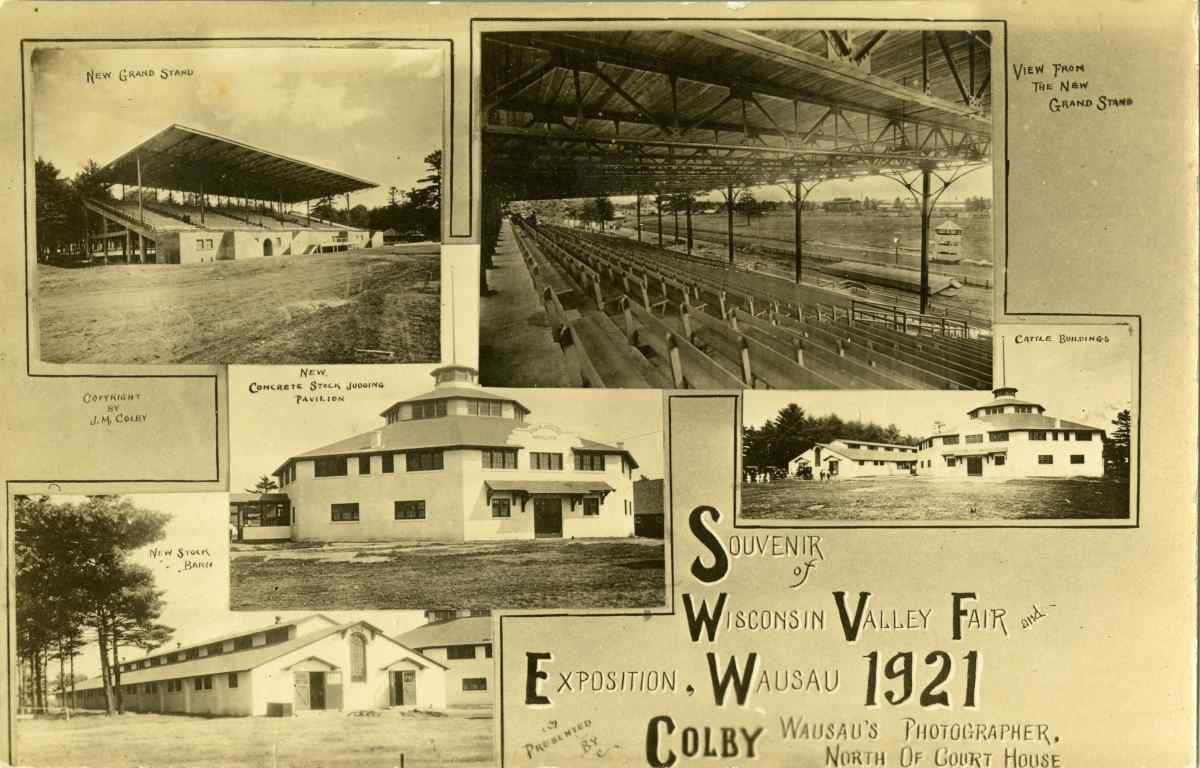
^ Souvenir postcard produced by James Colby for the first Wisconsin Valley Fair and Exposition 1921. It shows the structures built by the County for the new park that were enjoyed by fairgoers.
The deal freed the Agricultural Society from having to maintain the fairgrounds (now named Marathon Park), and allowed them to develop the event to become what they believed it could become.
The fair in 1921 was given a new name, “the Wisconsin Valley Fair and Exposition,” which is how it has been known ever since.
